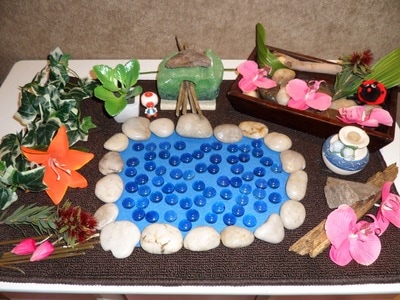 When considering providing child care, it is essential that individuals are aware of the personal and professional qualities Little Lambs considers to be of importance and would assist them in caring for children. A great home child care provider is someone who:
0 Comments
The video in this post quickly highlights the many ways arts in curriculum are important. Children learn best by doing, by being active participants in their learning journey. Art experiences allow for this hands on learning to happen in an intrinsic and holistic way.
Art/Creative Expression assists Early Childhood Development in the following ways, Social: through visual art experiences, a child *interacts with others *observes peers *observes the uniqueness of others *develops an understanding of the individuals within the social environment Emotional: through visual art experiences, a child *makes choices (independence) *expresses self *externalizes self -places through and feelings outside self -takes confidence, courage, the feeling that the self is okay and that it is alright to explore and make mistakes Cognitive: through visual art experiences, a child *learns colour, shape, texture, transformations *conceptualizes images *invents forms for the expression of images(symbols) *involved in process requiring abstractions and transformations of one thing into another *problem solves *gives though concrete form *creates visually persuasive images *produces a number of ideas *sees relationships *increases flexibility in thinking patterns *finds differences and similarities *shows independent thinking Physical: though visual art experiences, a child *uses whole arm movement (pounds claim marks with crayon, and paints with brush) *uses wrist action (markers, paint brush) *develops eye-hand coordination and refines fine motor skills Children are to be encouraged to be their creative selves. Through the use and growth of their creativity they are establishing their social, cognitive, emotional and physical abilities. It is more then simply putting paint to paper or molding with play dough. Arts in Early Childhood development are incredibly important and not to be forgotten. Thank you for reading, Kindest regards, Kristina references: Pear Cohen, & Gainer, R.S. (1984). Art: Another language for learning. New York; Schoken Books Loose parts are materials that are both natural and synthetic. They empower children to play creatively without limitations. A stick can become a bridge and rocks can become animals. The possibilities are endless. By exposing children to loose parts play we are allowing them the opportunity to use abstract thought while simultaneously allowing for concrete exploration.
I enjoy using loose parts in both sensory play and on their own. Loose parts also provide opportunities for parallel play and cooperative play. examples of loose parts: Natural play area water • sand • dirt • sticks • branches • logs • driftwood • grasses • moss • leaves • flowers • pinecones • pine needles • seeds • shells • bark • feathers • boulders • rocks • pebbles • stones Playground balls • hoops • jump ropes • tires • sand • water • dirt • straw • boulders • rocks • stones • pebbles • buckets • cups • containers • digging tools • chalk • scarves • ribbons • fabric Indoor Environment blocks • building materials • manipulatives • measuring • pouring devices (cups, spoons, buckets, funnels) • dramatic play props • play cars, animals, and people • blankets • materials • floor samples • water • sand • sensory materials • recycled materials (paper tubes, papers, ribbons, caps, lids, wood scraps, wire, foam, cardboard) • plastic gutters • small plungers • tools • art materials (buttons, spools, natural and colored popsicle sticks, beads, straws, paints, brushes) CAUTION! loose parts that are small can be choking hazards, please do not use anything smaller than 1.25 inches for children under three. Always provide supervision while playing with loose parts. I would love to see how you are playing with loose parts! comment bellow to share your ideas. references: http://extension.psu.edu/youth/betterkidcare/early-care/our-resources/tip-pages/tips/loose-parts-what-does-this-mean http://www.readingplay.co.uk/GetAsset.aspx?id=fAAyADUAMgB8AHwARgBhAGwAcwBlAHwAfAA4AHwA0 http://www.childcarequarterly.com/pdf/winter14_parts.pdf http://www.homegrownkids.co.nz/Resources/Learning++Development+Resources/Loose+parts+play+for+children.html images sourced from : google free images |
Early Years at Home When we refer to home we refer to a feeling of welcome, family, comfort and belonging. Licensed home child care offers the feeling of "home" with the benefits of early years pedagogy. Categories
All
Archives
June 2023
©Little Lambs Home Daycare
©Kristina Schwartz |









 RSS Feed
RSS Feed